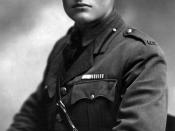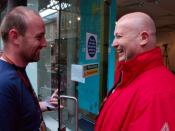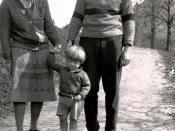How different was the American Dream from the English equivalent? The values of the societies represented within The Great Gatsby and Mrs. Dalloway tend to be superficial in the respect that people's morals are confused and shallow. The nature of the American Dream varies, there is no obstinate definition but it usually involves the 'ideal' American life as fed by the media. In the 1920's this could be having children, owning an admirable amount of land with property, perhaps owning a small business, a car or two and being well off enough to throw parties and be generally carefree. The British equivalent of the time would have been much more socially structured, not dissimilar to how it was in America prior to the war. Material possessions were desired but would have meant less if the family were not regarded as being of high class or importance. Class was hard to move between, so people became more concerned about reviving their youth.
In America, the vigorous rise of the stock market in the aftermath of the war led to a sudden, sustained increase in the national wealth and a newfound materialism, as consumerism ascended at unprecedented levels. Anyone from any social background could now, potentially, make a fortune. But conflict arose between the American aristocracy, families with inherited wealth and the newly rich industrialists and speculators. To identify the dilemmas faced by those living in the 1920's it is important to look at factors affecting the everyday life in the aptly named 'Jazz Age', as defined by Fitzgerald.
Jazz is a style of music characterized by a strong rhythmic under structure, blue notes, and most importantly an improvisation on melody and chord structure. The improvisation is the key feature in the naming this period of time. It was a time when...


